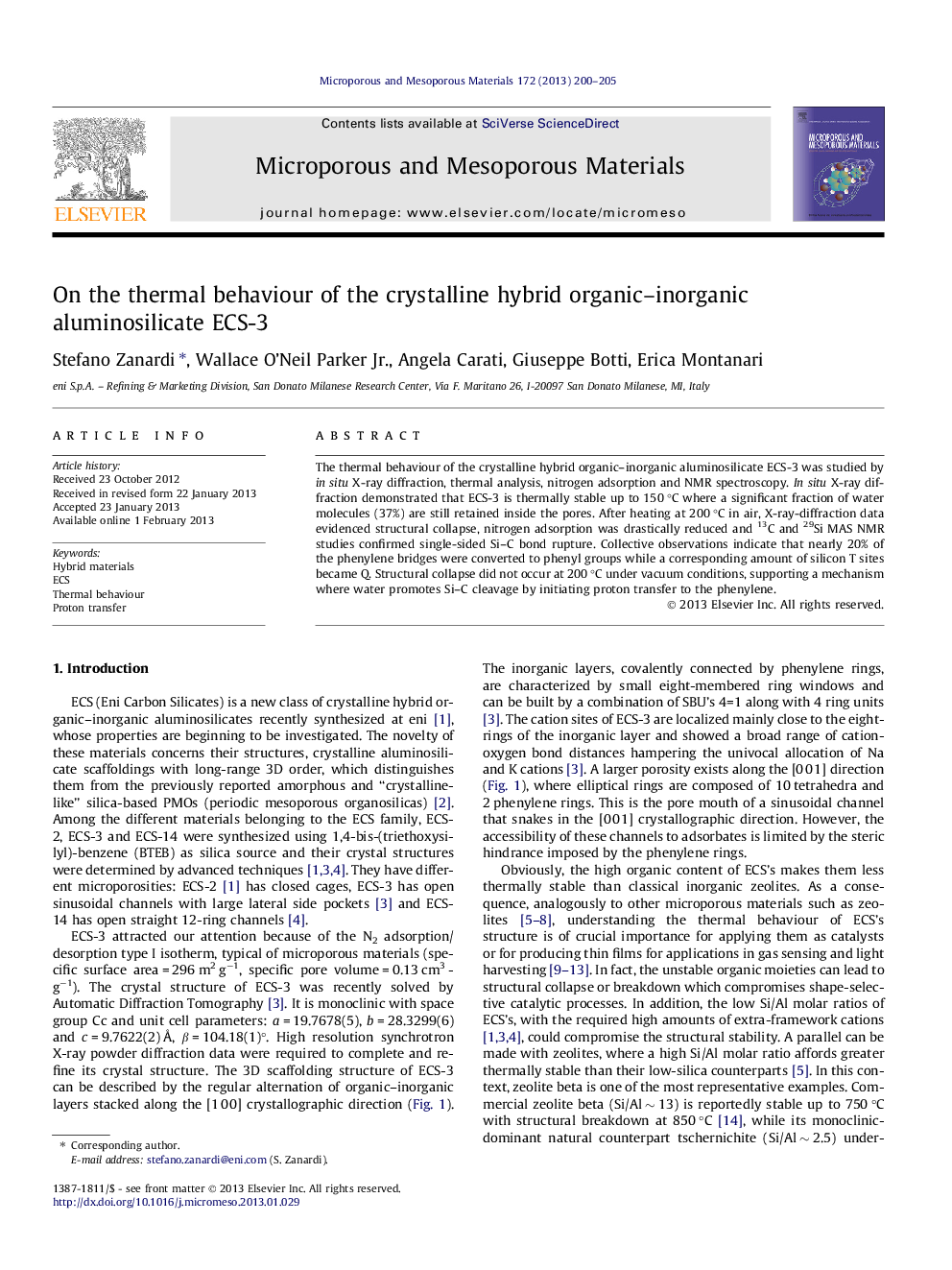| Article ID | Journal | Published Year | Pages | File Type |
|---|---|---|---|---|
| 73621 | Microporous and Mesoporous Materials | 2013 | 6 Pages |
The thermal behaviour of the crystalline hybrid organic–inorganic aluminosilicate ECS-3 was studied by in situ X-ray diffraction, thermal analysis, nitrogen adsorption and NMR spectroscopy. In situ X-ray diffraction demonstrated that ECS-3 is thermally stable up to 150 °C where a significant fraction of water molecules (37%) are still retained inside the pores. After heating at 200 °C in air, X-ray-diffraction data evidenced structural collapse, nitrogen adsorption was drastically reduced and 13C and 29Si MAS NMR studies confirmed single-sided Si–C bond rupture. Collective observations indicate that nearly 20% of the phenylene bridges were converted to phenyl groups while a corresponding amount of silicon T sites became Q. Structural collapse did not occur at 200 °C under vacuum conditions, supporting a mechanism where water promotes Si–C cleavage by initiating proton transfer to the phenylene.
Graphical abstractFigure optionsDownload full-size imageDownload as PowerPoint slideHighlights► Thermal behaviour of a crystalline hybrid organic–inorganic aluminosilicate. ► Single sided cleavage of organic bridge evidenced by NMR. ► Phenyl groups apparently obstruct nitrogen ingress into ECS-3's porosity.
